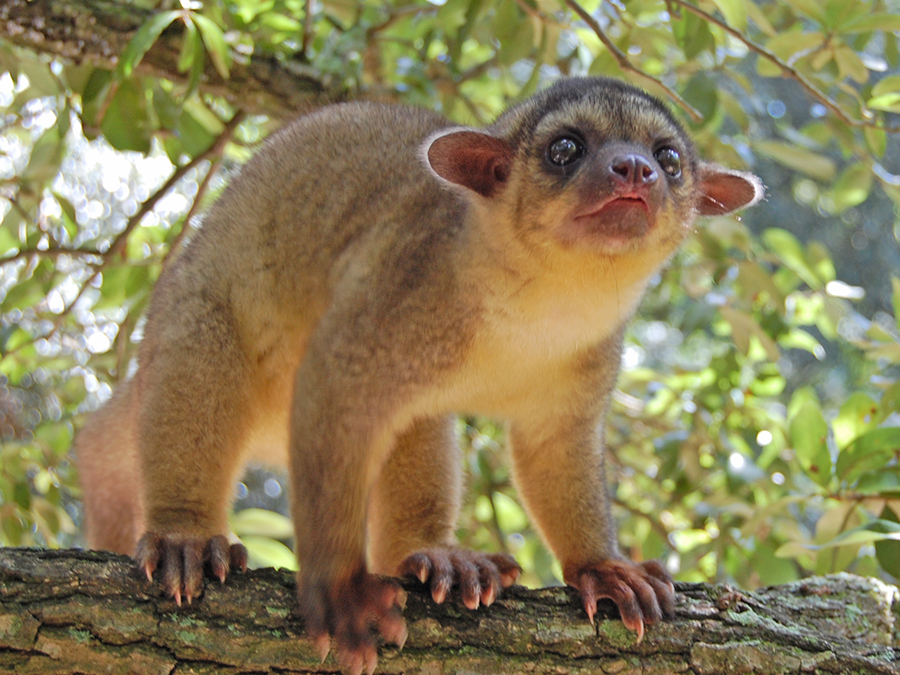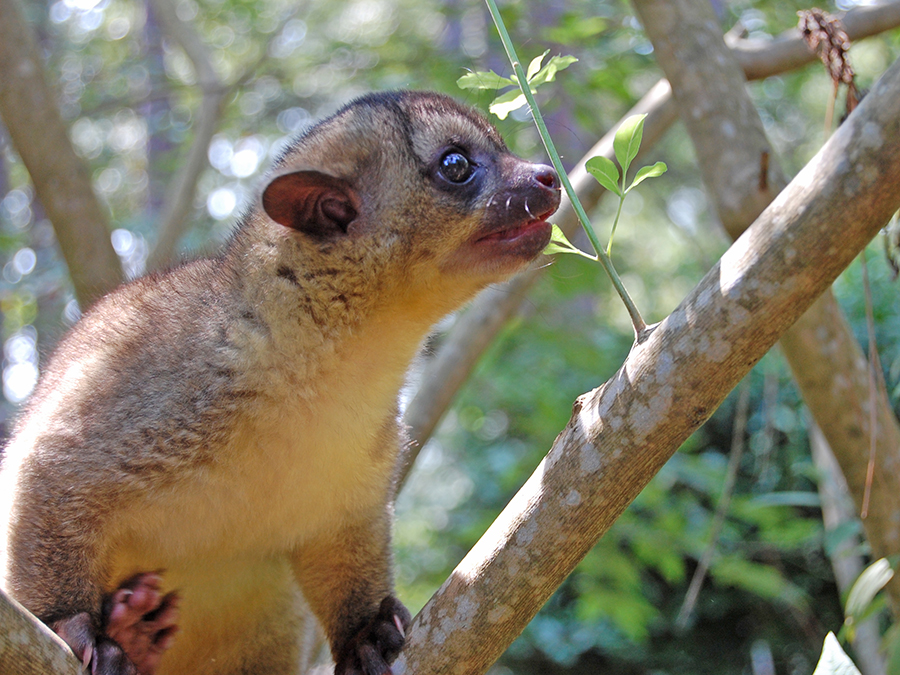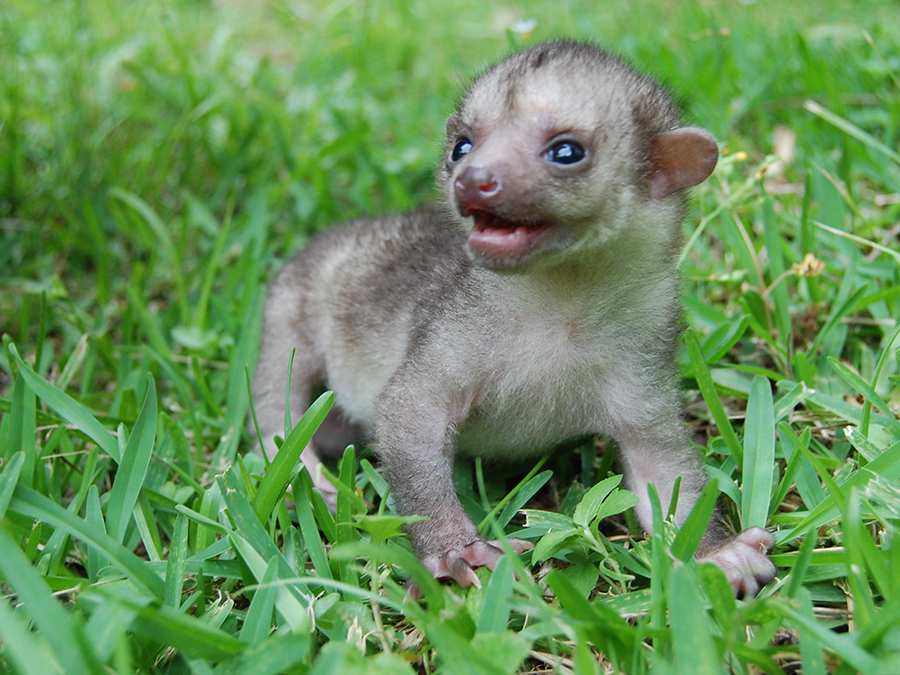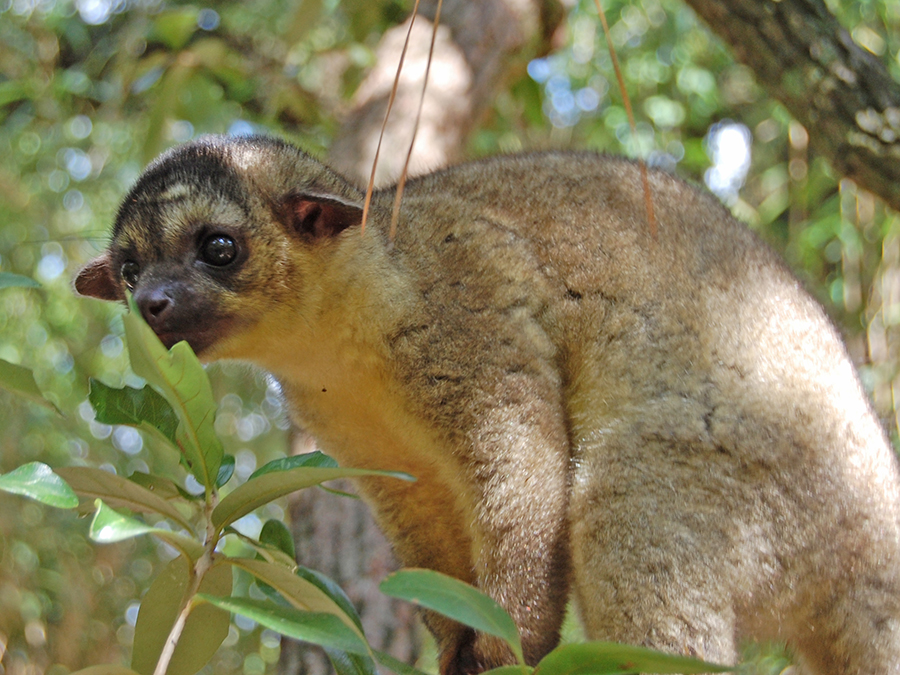Kinkajou
Potos flavus
CLASS Mammalia | ORDER Carnivora | FAMILY ProcyonidaeRANGE Southern Mexico, Central and South America
HABITAT Tropical forests; treetops
DIET Plant materials, primarily fruits, nuts and legumes, insects, eggs, sometimes even birds




